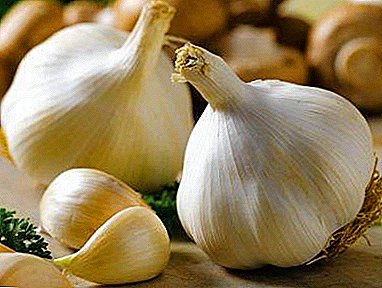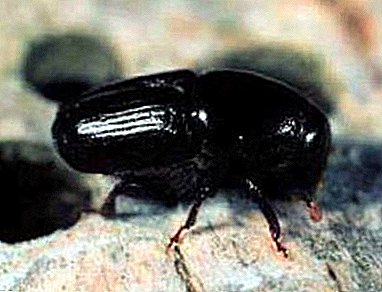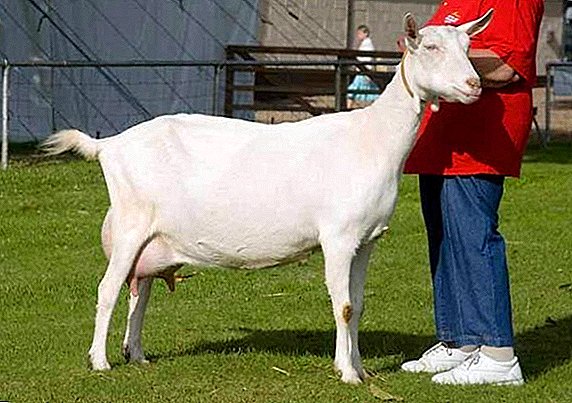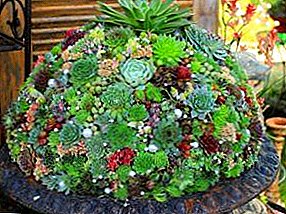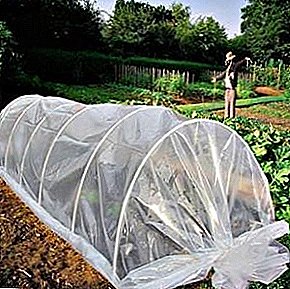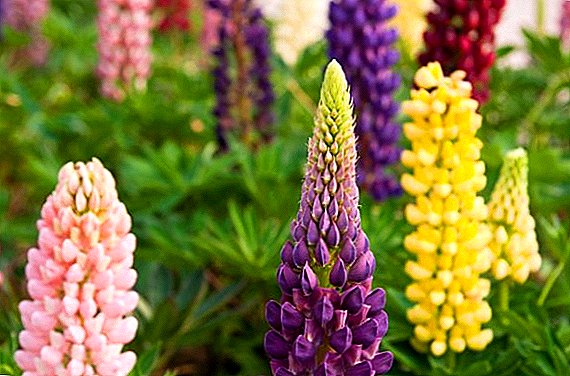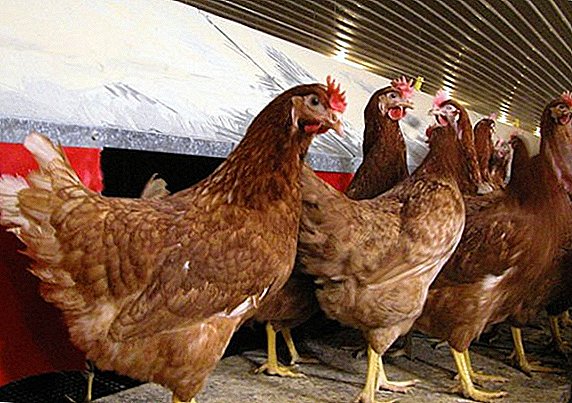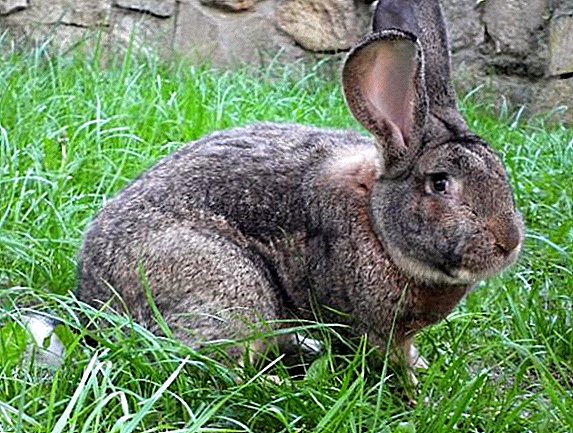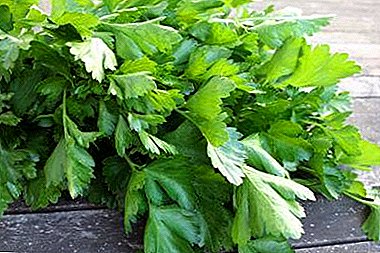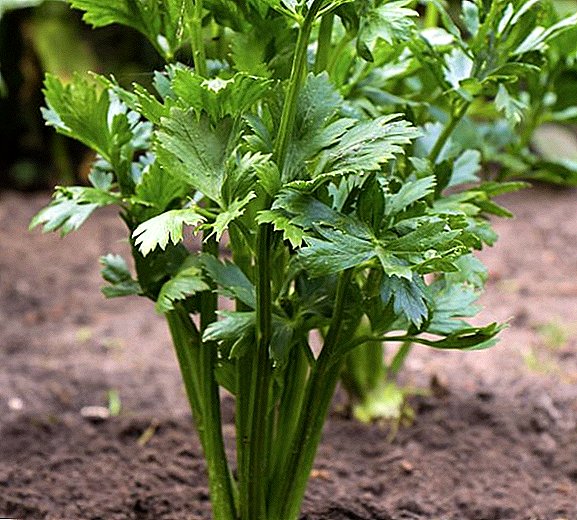 Growing celery is considered a challenge in vegetable production. It has a very long growing season and at the same time very low resistance to heat and cold.
Growing celery is considered a challenge in vegetable production. It has a very long growing season and at the same time very low resistance to heat and cold.
That is why some gardeners find it very difficult to grow. How to grow leaf celery - read in this review.
Features celery leaf
Celery is a perennial plant that belongs to the umbrella family. Its name comes from the German sellerie, therefore the synonymous name of the plant is selera. In culture, root, leaf and petiole forms are distinguished.

Celery is a versatile plant. Its leafy stalks are crispy and fragrant, the leaves are spicy and more nutritious than the stalks, and the seeds give an excellent flavor to the dishes. A native of the Mediterranean and the Middle East, celery was used as a flavoring by the ancient Greeks and Romans, as well as a medicine by the ancient Chinese. Now in Europe it is usually eaten as a vegetable or used as a seasoning in a variety of broths, casseroles and soups.
Did you know? The darker the celery stalks become, the more nutrients they contain. The texture also changes with color. Dark green stalks will be tougher.
Characteristics of the plant:
- height: up to 1 m;
- stem: straight, hollow inside;
- root: thickened, white;
- leaves: pinnately dissected, rhomboid;
- leaf size: 3-6 cm in length and 2-4 cm in width;
- flowers: creamy white, 2-3 mm in diameter;
- seeds: from ovate to spherical, 1.5-2 mm in length and width.
Where is the best place to plant celery leaf?
The natural habitats of the plant were salty and wet - marshy. But to the north of the Alps, wild celery is found only in the foothill zone on soils with a low salt content.

Current requirements for soil and planting area:
- the plant has small roots, so it needs frequent watering and soil with a large amount of nutrients;
- grows best on moist but well-drained soil rich in organic matter;
- Fertilizers are preferred compost or well-rotted manure, which should be distributed at the rate of 8-10 kg / m² in 10-15 upper centimeters of soil, well mixed (this will help improve drainage and retain moisture around the root zone);
- The mixed soil is plentifully watered a week before planting the seeds, which will improve drainage.
Important! Strong wind can damage and dry the plants, so choose a place protected from wind and drafts.
Air humidity
Celery prefers high humidity, which should be at a level not lower than 70%.
Lighting
The plant tolerates a light shade, but must have access to sunlight at least half of the daylight hours. Grown in full shade, celery tends to stretch.

Temperature
The plant requires a long growing season with cool temperatures. It is usually grown from seedlings, planting in early spring. Optimum growth occurs at an air temperature of + 16 ... + 21 ° C.
Important! Do not allow the temperature to drop below + 10 ° C and exceed it more than + 25 ... + 27 ° C.
Features planting celery leaf
In regions with a cool and temperate climate, crops are sown from late winter to early spring, and then from late summer to early autumn.
How to choose and prepare planting material
Since celery has a long ripening period, you need to start growing seedlings from seeds indoors. Landing is carried out for 8-10 weeks before the probable date of the end of frosts.
The seeds of the plant are tiny and their planting can be difficult. The situation can be alleviated by mixing the seeds with sand and scattering the mixture over the surface of the soil in a container for growing.
 Small celery seeds germinate very poorly
Small celery seeds germinate very poorly
To grow a seed crop, you need to do the following:
- Before sowing, soak them in warm water (+ 20 ... + 25 ° С) and then germinate 3% of them before tilting.
- Prepare a container with soil.
- Plant seeds. Planting should be shallow - about 0.5 cm.
- Before germination, the temperature is maintained at + 20 ... + 25 ° С, and after their appearance they are reduced to + 14 ... + 16 ° С.
- Watering should be moderate to keep the soil constantly wet until germination.
- As soon as the seeds germinate, in the phase of 2-3 true leaves of the plant are planted in separate containers - dive. This is necessary to improve root development.
- Fertilize planting 1 time per week with a weak solution of a balanced fertilizer.
- Saplings take about 6 weeks to grow to the required size for transplanting to the open ground.
Video: sowing leaf celery seedlings
Preparing the soil for planting
On the plots of land from the annual use of the soil is depleted and oxidized, so before planting it is necessary to carry out work to improve the composition of the soil.
Soil pretreatment includes:
- Digging the site.
- Removing weeds and stones (the first will deplete the soil, and the second can deform the roots).
- Add to the top 15 cm of soil compost or humus.
- Abundant watering a week before planting the seedlings - it helps to evenly distribute organic fertilizers.
Find out also whether it is possible to grow celery at home on a windowsill.
Scheme and technology of landing
Planting scheme of seedlings: 45-60 × 20-30 cm or 40 × 40 cm. Celery is well used to compact the planting of other crops (onions, tomatoes, cabbage, beans, etc.).
 It is not necessary to select a separate bed for this crop.
It is not necessary to select a separate bed for this crop.
How to care for celery leaf
Leaf celery sowing maintenance consists of watering, periodic fertilization, soil loosening, and pest control.
Watering
The plant must be watered frequently, but not deeply, because it has shallow roots. If you dry out the soil, the plant will experience stress and its stems will become dry and fibrous. To avoid drying out, you can mulch the soil with straw or other similar materials.
Did you know? Celery was first used as food in the XVI century. in Italy. Prior to that, it was used as a medicinal plant for the treatment of toothache, insomnia, gout, rheumatism and arthritis.
The nuances of feeding
The first feeding is usually carried out 10-15 days after disembarking on a permanent place of growth. The second - during the intensive growth of leaves, the third - during the formation of the root. As a fertilizer, a mixture of urea (10-15 g), potassium chloride (10-15 g) and superphosphate (45-50 g) per 1 m² is used.
Weeding and soil care
Remove all weeds during loosening. They compete with culture for nutrients. Loosening will also ease the soil and provide more room for growth of the root of the plant. The treatment is carried out the next day after watering.

Harvesting and Storage
Begin harvesting celery when the stalks are large enough to be used as food. Cut the individual stems, starting from the outside. The collection of leaf parts is possible until late autumn. Store the harvest for 2-3 weeks in a plastic bag in the refrigerator.
Read more about the celery harvesting features.
In fact, the cultivation of celery is not so much difficulty. The main thing: to follow the rules of agrotechnology of this culture, set out in our article.


